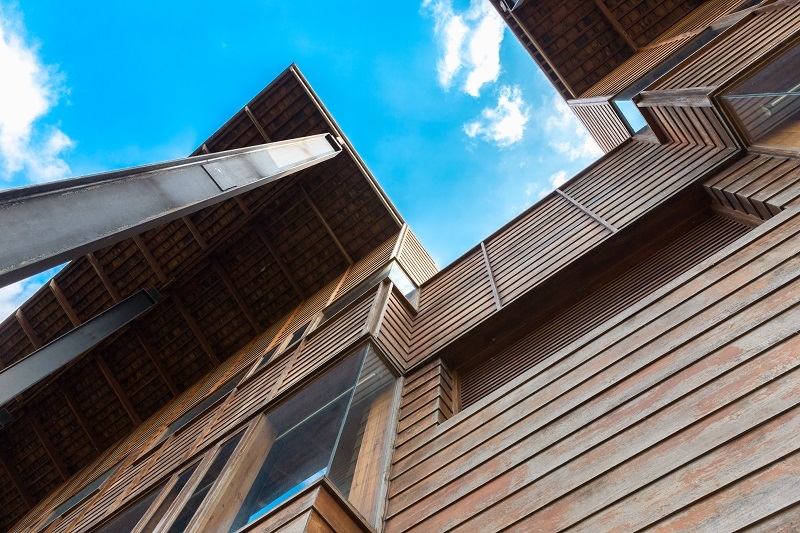Published: 02/08/23 By: Mike Bekin
There are two ways where timber and stain come together in the same sentence. One is when you buy timber stain at your local timber merchant with a view of adding colour and durability to your cladding and decking. The other is tannin staining on surrounding surfaces, in which the areas around your timber cladding become discoloured by being in close contact with the tannins released by the timber as it weathers naturally. If you want to understand more about tannin staining and how to reduce it, read on.
Why Does Timber Look Stained?
Timber is a natural material but its structure is pretty complex, with each plank of wood made up of numerous natural cells and fibres. One part of timber structure is in liquid form, known as extractives, or even essential oils. These extractives are usually found in the heartwood of the timber but can spread to other layers of the wood and surrounding surfaces.
One extractive in particular is to blame for the staining issue and discolouration of wood and surrounding surfaces. We call this extractive “tannin”, and it is not uncommon for it to leach through and out of the wood, particularly when the timber is used for an exterior application. Rain pulls up the tannin and allows it to discolour certain areas of the timber, as well as nearby surfaces. If your concrete wall has a reddy-brown stain near to your wood, you are seeing the tannins in action.
How to Prevent Timber Staining Other Materials
If you are concerned about timber staining surrounding building materials, particularly those which are absorbent, it is smart to let the wood weather before placing them side-by-side. During the early stages of the weathering process, when timber is subjected to open air, wind, sun and rainfall, is when the tannins are most likely to leach onto the surface of the cladding boards. Once the boards have weathered and thus released their tannins, they are less likely to stain.
It is also best to plan ahead for staining by only using stainless steel fixings which will not be corroded by the tannins, and avoiding close proximity with concrete. Clever design can channel water with high timber tannin content away from other surfaces. This is tricky, but it is worth it for low-maintenance, stain-free construction!
How to Prevent Tannin Staining on the Timber
As well as staining surrounding materials, tannin can rise to the surface of timber cladding and cause coloured marks on the wood itself. To prevent this, you can apply tannin-resistant primers and waterproofing sealants.
Tannin discolouration can also occur when stains are applied unevenly, causing “tannin pull”. The tannins rise through both the timber and the stain, and end up lying on the surface. To reduce the chance of this happening, call in an expert to stain your wood and only try it yourself if you do not mind running the risk.
If you go ahead and stain your wood and cause tannin pulling, or you see tannin discolouration from water exposure, sand down the timber with a fine sandpaper until the surface is one even colour again.
Learn More About Timber
At EcoChoice, we supply timber for cladding, decking and more, with a wide range of sustainably sourced species available. We are timber experts and part of our job – when we are not delivering timber – is to help you maintain your wooden constructions. For more information on timber maintenance or to learn which species is right for your project, check out more on our blog. For advice specific to your situation, feel free to get in touch with our team today and we will be happy to help.
Image: 2p2play / Shutterstock.com
Tags: Timber, Treatments
Categories: Insights
